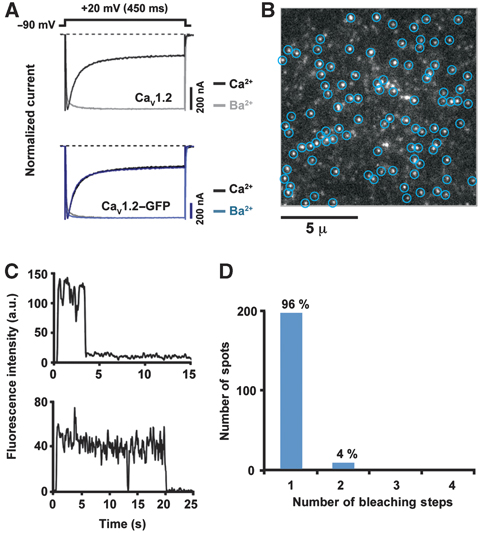
Multiple C-terminal tail Ca2+/CaMs regulate Cav1.2 function but do not mediate channel dimerization
Abstract
Interactions between voltage‐gated calcium channels (CaVs) and calmodulin (CaM) modulate CaV function. In this study, we report the structure of a Ca2+/CaM CaV1.2 C‐terminal tail complex that contains two PreIQ helices bridged by two Ca2+/CaMs and two Ca2+/CaM–IQ domain complexes. Sedimentation equilibrium experiments establish that the complex has a 2:1 Ca2+/CaM:C‐terminal tail stoichiometry and does not form higher order assemblies. Moreover, subunit‐counting experiments demonstrate that in live cell membranes CaV1.2s are monomers. Thus, contrary to previous proposals, the crystallographic dimer lacks physiological relevance. Isothermal titration calorimetry and biochemical experiments show that the two Ca2+/CaMs in the complex have different properties. Ca2+/CaM bound to the PreIQ C‐region is labile, whereas Ca2+/CaM bound to the IQ domain is not. Furthermore, neither of lobes of apo‐CaM interacts strongly with the PreIQ domain. Electrophysiological studies indicate that the PreIQ C‐region has a role in calcium‐dependent facilitation. Together, the data show that two Ca2+/CaMs can bind the CaV1.2 tail simultaneously and indicate a functional role for Ca2+/CaM at the C‐region site.